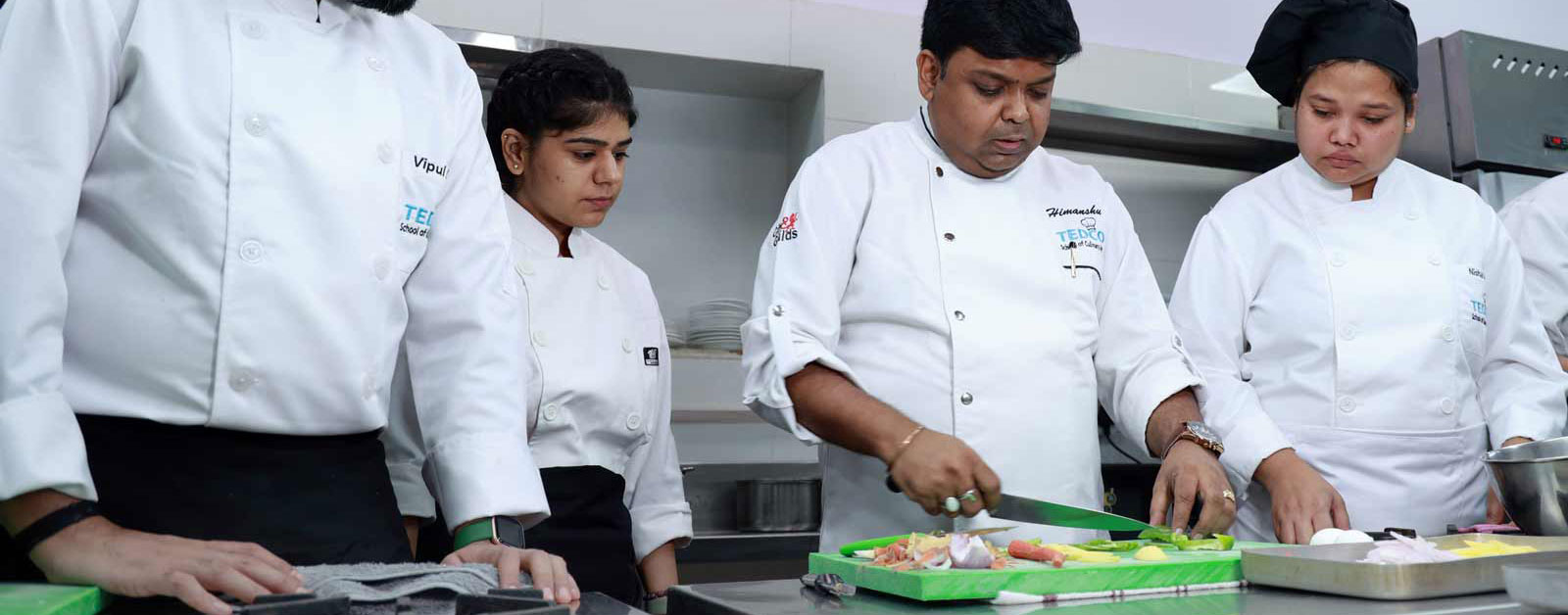

For professional chefs, mastering different cutting techniques can improve consistency, flavour development, aesthetics and overall experience of a dish. It can also bring a sense of ease and joy to your kitchen by simplifying the cooking procedure. Moreover, your cutting skills make you stand out as a chef while helping you get on to the path of excelling as a head chef. So, here are the 7 top cutting techniques every chef must know:
This classic cutting technique involves squaring off the sides of a product and slicing it into even planks. It may also entail slicing products into long matchsticks cut into uniform cubes. Ideally, the small dice measure 1/4" on all sides; medium dice 1/2" and large dice 3/4". This cut is used for vegetables or fruits, like squash, tomatoes and potatoes.
Also known as allumette or matchstick cut, this fine-cutting technique creates long and slender pieces by slicing vegetables into thin planks and then stacking the plants to cut them into thin strips. Also called Julienning, this cutting technique creates slices with a thickness between 1 to 2mm.
This cut is regularly used for celery and carrots, or you can even create Julienne fries using potatoes. Mastering this cut can help you prepare ingredients neatly and finely. It is one of the most important cutting techniques every chef must know as it is used in the initial step of cooking.
Dissimilar to the basic knife cuts, the mince cut creates irregular and roughly chopped pieces using chopping or slicing motion. The cutting technique is generally used for flavour-distributing ingredients like herbs, garlic and other aromatics.
Quite the same as julienne cut, this technique creates thick, squared rectangular pieces that generally measure around 3" long and 1/4" thick. This cut is often used to create small and uniform sticks for vegetables and French fries.
This is a fancy way of creating a very small but more precise size similar to the mince cut. Generally reserved for garnishes and soups, the Brunoise cutting technique is an added step once you are done Julienning all your ingredients. Further dicing of the already julienned ingredients creates small cubes. Ideally, the cube sizes must be 2mm x 2mm x 2mm, and chefs who have mastered the Julienne can easily get their hands on the Brunoise.
The cross chop is used to chop vegetables and herbs quickly without worrying about presentation. It is not important to get the pieces right in this cutting technique.
This cutting technique applies to potatoes only. After skinning and washing potatoes, use this technique to cut them into 2 cm x 7 cm pieces so they appear in chunky chip shapes.
When you are new in the industry and craving to build credibility, a complete grasp of the above-mentioned cutting techniques ensures all your dishes are prepared evenly throughout. Additionally, this also increases your safety and efficiency as a professional chef.
Ready to discover all of these basic cutting techniques and more? The culinary study programs at Tedco Global Chefs Academy can help you. Get in touch with us now to get the ball rolling! We are available at +91-8882 595 959, +91-9999 702 506 or info@tedcoeducation.com.
Click one of our representatives below to chat on WhatsApp or send us an email to
info@tedcoeducation.com
Counselor
Bakery and Pastry Courses
Counselor
Culinary Arts Courses
Click one of our representatives below to chat on WhatsApp or send us an email to
info@tedcoeducation.com
Counselor
Bakery and Pastry Courses
Counselor
Culinary Arts Courses